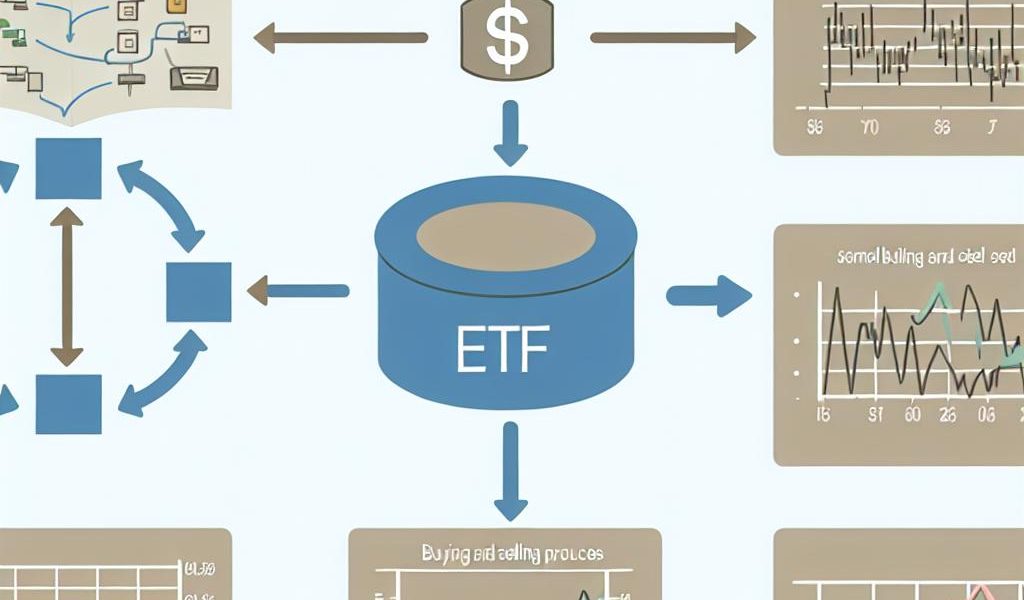
How do ETFs work?
admin - April 1, 2025Understanding ETFs
Exchange-Traded Funds, commonly referred to as ETFs, are investment vehicles that function similarly to individual stocks in that they are traded on stock exchanges. They are specifically designed to track the performance of various financial indicators, including specific indices, commodities, currencies, or collections of assets. Investors who choose ETFs can often benefit from diverse and efficient market exposure.
Composition and Structure
ETFs are predominantly composed of a mix of stocks, bonds, or other financial securities, offering a form of built-in diversification. This diversified composition is a significant advantage, as it helps mitigate risk in comparison to investing in a single stock. This diversified structure is balanced and lends stability to an investment portfolio. Many ETFs are regulated by the U.S. Securities and Exchange Commission (SEC) under the Investment Company Act of 1940. This regulation provides a layer of oversight that ensures these investment tools adhere to specific financial standards, thereby offering investors a degree of security and reliability.
Trading Mechanism
One distinctive feature of ETFs is their ability to be traded throughout the trading day on stock exchanges, much like individual stocks. This continuous trading capability distinguishes them from mutual funds, which are priced and only traded at the close of the trading day. Consequently, ETFs offer an attractive option for investors who value flexibility and the opportunity to take advantage of market fluctuations during regular trading hours. With their stock-like characteristics, ETFs allow for a variety of strategic investment maneuvers, including short selling and buying on margin. This adds to their appeal among more experienced traders and investors who are looking to leverage different market strategies.
For more detailed information on how these diversified instruments can be strategically used to maximize returns, visit Covered Call ETFs for a comprehensive overview of potential strategies.
Cost Efficiency
A significant advantage ETFs hold over traditional mutual funds is their cost efficiency. Most ETFs typically feature lower expense ratios. Investors benefit from minimal management fees because, in many instances, ETFs are passively managed and tied to an index. This renders them relatively cost-effective in maintaining a portfolio. While the lower costs associated with ETFs are appealing, it is important for investors to consider the trading fees that may arise with frequent transactions. Such trading costs, like commissions, can accrue and offset the cost-saving benefits over time. Through careful planning and disciplined trading, investors can capitalize on the cost-efficiency that ETFs offer.
Types of ETFs
The world of ETFs is quite expansive, with various types available to cater to different investment objectives. Here’s a look at some of the most common types:
Equity ETFs: These are designed to invest in stocks and often aim to replicate the performance of a major stock index. They can range from broad market indices covering large sectors of the economy to more focused indices targeting specific industries or regions.
Bond ETFs: These ETFs focus on investments in fixed income securities and strive to provide more stable returns relative to equity ETFs. They can include government bonds, corporate bonds, or municipal bonds, offering investors a way to diversify their portfolios with income-generating assets.
Commodity ETFs: As their name implies, these ETFs invest in tangible commodities like gold, oil, or agricultural products. They are often used by investors to hedge against inflation or to gain exposure to assets that tend to perform differently from traditional stocks and bonds.
Sector and Industry ETFs: These target specific economic sectors, such as healthcare, technology, or financial services. They allow investors to focus on particular areas of the market they believe have growth potential.
While these are the primary categories, there are also more specialized ETFs that might concentrate on alternative asset classes, countries, or emerging markets, providing numerous options for investors with different risk appetites and objectives.
Tax Efficiency
Another appealing aspect of ETFs is their favorable tax structure compared to that of mutual funds. Thanks to their unique operational framework, ETFs tend to minimize capital gains distributions. This feature helps investors to defer taxes until they actually sell the investment. As a result, investors can maximize their after-tax returns, which is particularly advantageous for those who are strategic in their planning and management of tax liabilities. By efficiently managing tax exposure, investors can optimize their financial growth over time.
Liquidity and Flexibility
The high liquidity characteristic of ETFs adds yet another dimension of advantage for investors. Because they are traded on stock exchanges, entering and exiting positions is relatively easy. The ability to employ advanced trading strategies is also a significant draw for sophisticated investors. Additionally, the liquidity of ETFs often results in tighter spreads, reducing transaction costs associated with buying or selling. This combination of flexibility, accessibility, and reduced transaction costs makes ETFs an attractive option for those looking to maintain a dynamic investment portfolio.
Conclusion
ETFs present a dynamic and efficient tool for a wide range of investors, enabling exposure to diverse asset classes and various investment strategies with ease. Offering benefits such as diversification, cost-efficiency, and high liquidity, they fit well into both growth and income-based investment plans. Despite their simplicity and benefits, it’s imperative for investors to conduct comprehensive research or consult with a financial advisor to tailor their investment approach to their particular goals and risk tolerance. To gain deeper insights and further guidance on ETF structures and strategies, consider exploring respected financial advisory platforms such as Investopedia to enhance one’s understanding and investment acumen.
This article was last updated on: April 1, 2025
